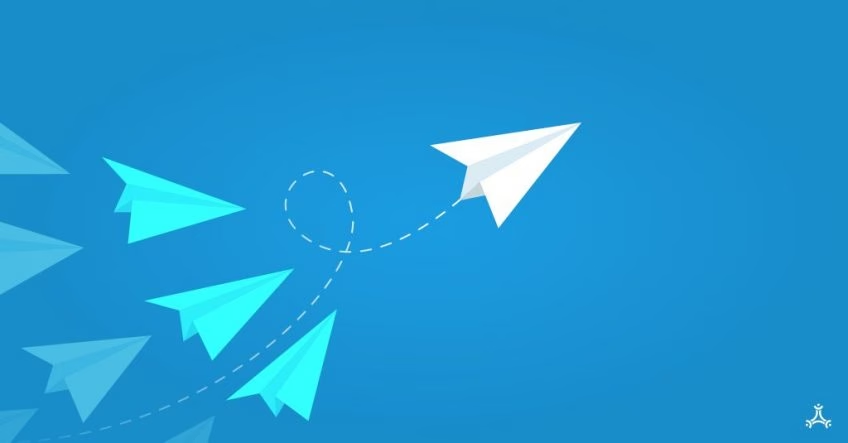
Top 10 Minimum Viable Product Examples?
Looking for 10 successful minimum viable product examples?
You've come to the right place. Let's see
What is a Minimum Viable Product and how to launch one successfully?

Before we begin, let's recap a few things first.
An MVP is a functional product that has been built with minimal features. The idea is that you create it by spending the minimum amount of time and energy possible. You launch it in the market and start to receive feedback from customers. Read “What is an MVP?” for more insights.
You will likely have made several assumptions about the customers who will use your product. The user feedback you get from the market helps you validate your assumptions and hypotheses. Depending on the feedback, you may have to go back to the drawing board or enhance the MVP with more features.
Launching a successful MVP involves the following:
- You need to develop clarity about what you will offer and why, e.g., is there a market for what you plan to offer?
- Conduct highly focused discussions with business stakeholders to learn about potential customers, their pain points, what will help them, etc.
- Brainstorm with your business stakeholders about what features you will offer. Determine the relative impacts of the features, prioritize them, and decide what you will offer as part of the MVP.
- Manage the MVP development process such that you can eliminate disruptions to your existing business.
- Plan the project, including people, IT infrastructure, technology stack, tools, etc.
- Execute your project plan smartly by fostering collaboration in your team.
Our guide, “5 Tips to Create a Sleek MVP,” can provide you with more insights.
10 minimum viable product examples

You can learn a good deal about launching successful MVPs by studying the following examples:

Get a complimentary discovery call and a free ballpark estimate for your project
Trusted by 100x of startups and companies like
1. Dropbox
Dropbox, the well-known provider of services like file hosting, cloud storage, file synchronization, etc., was founded in 2007. Dropbox is headquartered in San Francisco, California, USA.
The company approached the MVP for its file-sync solution in an innovative manner. Dropbox wanted to know whether its potential customers would want to use its file-sync solution and pay for it. The company also needed to convince its investors that a burgeoning market exists for this solution.
Dropbox launched a video explaining its solution in simple terms. The company popularized this explanation video using its various social networks, and its objective was to gauge the reaction of people to this solution.
As explained in “How Dropbox started as a minimal viable product”, Dropbox believed that many users wouldn’t readily recognize that file synchronization is a problem they face. Dropbox also believed that only when users see a solution, they will understand that they face this challenge.
Even before building a product with significant engineering effort, Dropbox launched its explanation video, and the results were impressive! The target audience understood its intended functionality from the video, and the number of sign-ups increased from 5,000 to 75,000 overnight!
2. Airbnb
Originally known as “Air Bed and Breakfast,” Airbnb was founded in 2008, and the company is headquartered in San Francisco, California, USA. The founders were trying to establish themselves in business when they noticed something interesting in San Francisco.
Brian Chesky and Joe Gebbia, the founders, saw that the Industrial Design Conference in the city had attracted a lot of visitors, and all hotel rooms in the city were booked. They acted quickly!
They purchased a few air beds and put up a website named “Air Bed and Breakfast”. They offered the visitors a place to sleep; moreover, the guests could get breakfast in the morning.
The price was reasonable, and they got 3 visitors. Chesky and Gebbia were able to validate their business idea since they saw that there are people who will pay to stay at someone’s home instead of a hotel.
Nathan Blecharczyk, a technical architect and graduate of the prestigious Harvard University, joined them as the 3rd co-founder. As you can read in “The Airbnb founder story: From selling cereals to a $25B company”, they faced several technical challenges. However, they launched their company in August 2008.
3. Groupon - a minimum viable product example
Groupon is a well-known American e-commerce company that connects subscribers with local businesses. The company is headquartered in Chicago, Illinois, USA, and it launched its service first in November 2008. Users can find deals for restaurants, spas, and much more on Groupon.
The founding team of the company, led by Andrew Mason, started a customized WordPress blog, and they called it “The Daily Groupon”. They would manually post deals every day.
When a website visitor signed up for a deal, Mason and his team would manually create a PDF document with the details of the deal. They would then manually email it to the buyer.
As you can read in “How did Groupon get their first 10 businesses?”, the founders of Groupon didn’t build a comprehensive coupon system to start with. They first tested the idea with a WordPress site maintained manually, and they found that there is indeed a market for what they are offering!
4. Buffer
Buffer is a social media management application launched in November 2010. Joel Gascoigne, Leo Widrich, and Tom Moor founded Buffer Inc., which is headquartered in San Francisco, California, USA.
Buffer offers its users the means to schedule their posts on Twitter, Facebook, Instagram, Pinterest, and LinkedIn. It's app queues up social media posts instead of users scheduling each post individually.
Buffer launched just a landing page as an MVP to test whether a market for this service exists! It explained its product on this landing page and encouraged people to sign up.
The company provided a button for pricing plans. When users clicked it, they saw a short message stating that the service wasn’t yet ready, however, the users should sign-up to receive updates.
As explained in “Idea to paying customers in 7 weeks: How we did it”, the company used the email addresses they gathered to interact with potential users to learn about their needs. Subsequently, Buffer changed the landing page to display a pricing plan when users clicked that button.
Users interested in purchasing this product could sign up for it. This showed Buffer the percentage of visitors that could become its potential customers.
5. Zappos - another successful MVP example
Zappos, an American online retailer specializing in shoes and apparel, was founded in 1999. Amazon acquired it in 2009.
1,200 top developers
us since 2016
Nick Swinmurn, a co-founder of Zappos, first needed to know whether anyone would use an online retail store for buying shoes. Remember that it was 1999, after all!
Swinmurn collected photos of shoes from local retail stores, and he published them on the company’s website. Upon receiving an order from a customer, Swinmurn would visit that local store, buy that shoe, and subsequently, sell it to the customer.
This way, using an entirely manual process, Zappos delivered the desired functionalities to its customers. The company was able to test its hypotheses about its product. Read “10 massively successful minimum viable products” for more insights.
6. Twitter
Another name among the popular MVP examples is Twitter. The idea behind Twitter, the American microblogging and social networking service, originated in a meeting held in Odeo, a podcasting company.
Jack Dorsey, Biz Stone, and Noah Glass founded Twitter in 2006, and the company is headquartered in San Francisco, California, USA. Read more about it in this Wikipedia entry on Twitter.
Odeo had faced stiff competition, and the company was trying to chart its future course. The company brainstormed and came up with an idea of an SMS-based service for sharing updates with a group of people.
The team working on this idea created a prototype named “twttr” for the internal use of Odeo employees only. It quickly became popular, and several employees ran up monthly SMS bills amounting to hundreds of dollars.
The popularity of “twttr” proved the potential of a microblogging service; therefore, the MVP helped them to validate their idea. Read “The real history of Twitter, in brief” for more insights.
7. Zynga
Zynga is an American company that creates social video games. The company was founded in 2007, and it’s headquartered in San Francisco, California, USA. FarmVille, CityVille, and Zynga Poker are just some of its famous games.
Zynga has an interesting way to judge the potential of a game that they plan to develop. The company uses a combination of website landing pages and Google AdWords.
Zynga runs short ads in its existing online games. It also creates ads about potential games and various features of these games. Coupled with interesting landing pages, these provide enough information to Zynga about the trends in the market for games.
This way, they avoid developing games that don’t interest players. You can read “Step by step guide to MVP part 2 – Adwords test” to learn more about using Google Adwords to test the potential of your business idea.
8. Foursquare
Foursquare, a location-based social network, was founded by Dennis Crowley and Naveen Selvadurai in 2008. The company is headquartered in New York City, New York, USA. New visitors to a city can use it to discover restaurants, attractions, and more, whereas businesses can utilize Foursquare to increase their visibility.
Foursquare launched an MVP with one feature only, which helped them to launch it quickly. Users could check in using their location data, and the app offered gamification rewards. E.g., the app would offer badges as users check in.
Foursquare focused on the user experience; subsequently, they added other features based on the market feedback. E.g., the features like recommendations and city guides were late additions.
I recommend that you read “What is Foursquare? - Location-based social networking”, a 2013 review of Foursquare to understand how the Foursquare MVP worked.
9. Spotify
Spotify, the globally recognized media services provider, was founded in 2006, and it’s headquartered in Stockholm, Sweden. The company follows a comprehensive MVP product development lifecycle, which has the following steps:
- “Think it”;
- “Build it”;
- “Ship it”;
- “Tweak it”.
They started with the most important feature, i.e., music streaming. Spotify launched desktop apps with this key feature and tested the market.
While this allowed them to receive valuable market feedback, they also used this time window to work on the inevitable license concerns of the music industry. Spotify continues to use this process, which works as follows:
- The “Think it” stage tests the concepts.
- An MVP is released after testing in the “Build it" stage.
- Spotify uses the “Ship it” and “Tweak it” phases to ensure long-term quality and alignment with the needs of the customers.
Read “Building minimum viable products at Spotify” for more insights.
10. Pebble
Last on our list of minimum viable product examples is Pebble. Pebble e-paper smartwatches had played a key part in bringing wearable devices to the mainstream.
While these smartwatches have been discontinued since December 2016, they were very popular between 2013 and 2015. Pebble Technology Corporation was based in the USA, and you can read more about the company in this Wikipedia entry.
Users could connect their Pebble smartwatches to their Android or iOS phones to see notifications and messages. The company couldn’t get enough investor funding in 2012; however, it went the crowdfunding way!
The company launched a fundraising campaign on the crowdfunding site Kickstarter. Eric Migicovsky, the founder of Pebble, created an explainer video that demonstrated the software prototypes of the smartwatch.
Migicovsky asked for contributions from interested customers and raised $10.3 million from them on Kickstarter between April and May 2012. Read more about this interesting MVP in an article from 2012 titled “How the Pebble smartwatch hit $2 million on Kickstarter [Q&A]”.
Planning to build a minimum viable product for your business?
The above minimum viable product examples provide key insights on conceptualizing, planning, and executing an MVP development project. However, such projects can be complex. You should engage a competent software development partner for such projects.
It's worth mentioning that creating an MVP is essential if you decide to make your organization Agile.
We, at DevTeam.Space, have the right capabilities to help you should you need an experienced development partner. Read our article “How to create a minimum viable product for your enterprise company” if you need to learn more.
You can also write to us your initial minimum viable product specifications, and one of our account managers will contact you to discuss further on how we can help you with your MVP development project.
Further Reading
Here are a few articles that might also interest you:
How To Build An Influencer Marketing Solution - DevTeam.Space
https://www.devteam.space/blog/build-an-influencer-marketing-solution-with-our-guide/
How To Build An Android Device Personalization App Like Zedge - DevTeam.Space
https://www.devteam.space/blog/build-an-android-device-personalization-app/
How to Build a Vegetarian / Vegan Restaurant Locator App - DevTeam.Space
https://www.devteam.space/blog/build-a-vegetarian-vegan-app-that-stands-out/
How to Build a Parental Control App on Android I DevTeam.Space
https://www.devteam.space/blog/build-a-parental-control-app-with-our-guide/
Frequently Asked Questions on Minimum Viable Product examples
A minimal viable product or MVP is a basic version of a product with just the core components that allow the company behind it to gather as much market data as possible in order to improve it in the most cost-effective manner according to the customer feedback.
Minimum viable products help companies to save huge sums of money by only developing products and features that users want.
If you are looking for experienced developers to help you create a product according to an MVP concept then you should contact DevTeam.Space. All the platform’s community of expert developers are vetted for quality and all of their work is guaranteed by the platform.


